Introduction
Mobile commerce, commonly known as m-commerce, is revolutionizing the way consumers engage with retail by enabling transactions through mobile devices such as smartphones and tablets. This transformative approach leverages cutting-edge mobile technology to offer an enhanced shopping experience, allowing consumers to shop anytime, anywhere. The increasing reliance on mobile devices has made m-commerce an indispensable component of the retail ecosystem.
Research underscores the pivotal role of mobile commerce in merging online and in-store shopping experiences. A significant majority of consumers prefer a hybrid shopping model, indicating a demand for seamless integration across various retail channels. This trend is further fueled by the tactile engagement that physical stores offer, coupled with the convenience of mobile shopping.
The emergence of innovative retail technologies, such as checkout-free stores, exemplifies the ongoing evolution of m-commerce. These advancements highlight the need for unified commerce solutions that integrate omni-channel POS, CRM, loyalty management, and marketplace integration, ensuring retailers remain competitive in a rapidly changing market.
As mobile commerce continues to expand, businesses must adapt to the evolving landscape by optimizing their mobile strategies, enhancing customer experiences, and leveraging the latest technological innovations. This comprehensive approach not only meets modern consumer demands but also positions retailers for sustained success in the digital age.
Definition of Mobile Commerce
'M-commerce refers to the purchasing and trading of products and services via portable devices like smartphones and tablets.'. This groundbreaking method of trade utilizes portable technology to greatly improve the shopping process, enabling users to conduct transactions at any time and in any location. 'With the continuous increase in handheld device usage, m-commerce has evolved into a crucial element of the retail landscape.'.
Recent research highlights the significance of mobile in connecting online and in-store shopping interactions. As per a report by Retail Technology Review, 72% of fashion and sportswear consumers choose to purchase both online and in physical locations, emphasizing the need for a smooth, uniform interaction across all platforms. This shift is driven by the desire for tactile engagement, with 55% of shoppers valuing the ability to touch and feel products, and 35% visiting stores to consider and compare options. Additionally, 69% of shoppers find inspiration from the in-store experience, emphasizing the need for integrated digital and physical retail strategies.
Furthermore, the rise of innovative retail technologies, such as checkout-free stores powered by Zippin technology, exemplifies how mobile commerce is transforming traditional shopping. The new Dublin Town To Go store at Dublin Airport, which utilizes a combination of cameras and weight-sensored shelving, enables shoppers to buy items without the necessity for a conventional checkout process. This not only enhances convenience but also sets a new standard for customer expectations in retail.
As wireless commerce continues to expand, the adoption of unified commerce solutions becomes increasingly vital. Companies like ETP Group are leading the way by providing robust and innovative retail solutions that integrate Omni-channel POS, CRM, loyalty management, and seamless marketplace integration. This comprehensive approach ensures that retailers can meet the evolving demands of modern consumers and stay competitive in a rapidly changing market.
Types of Mobile Commerce
'Commerce conducted via devices, or m-commerce, spans various categories to meet diverse consumer needs and behaviors, making it imperative for businesses to understand these types for effective strategy optimization.'. Each category boasts unique features and benefits tailored to specific customer segments. For instance, shopping applications on smartphones are a significant part of m-commerce but often lag behind in conversion rates despite their potential. This highlights the critical need for businesses to refine their mobile app strategies to improve user engagement and sales.
Recent research reveals that consumers no longer distinguish between online and in-store shopping; 72% prefer a hybrid approach, leveraging the strengths of both channels. This blended shopping behavior highlights the significance of delivering a smooth interaction across all touchpoints. In the fashion and sportswear industries, for instance, 55% of customers appreciate the physical sensation of touching and feeling products, while 35% visit stores to compare choices. This dual-channel preference requires a strong strategy that complements and enhances the in-store experience.
Moreover, the role of handheld devices in shaping customer behavior cannot be overstated. With cellular devices deeply integrated into daily life, they have become a vital tool for accessing information, shopping, and interacting with brands. As a result, companies need to emphasize a robust presence on portable devices to remain competitive. According to industry benchmarks, eCommerce, which includes m-commerce, is a rapidly growing segment of the global economy, encompassing a wide range of industries from retail to travel and hospitality.
In today's digital landscape, businesses that fail to adapt to evolving m-commerce trends risk falling behind. A digitally targeted approach not only attracts new customers but also increases sales and customer lifetime value. By understanding and leveraging the different types of commerce on devices, businesses can position themselves for success in the dynamic world of digital trade.
Mobile Shopping
Shopping through portable devices has transformed the way customers engage with brands, allowing them to explore and buy items straight from their handheld gadgets. This experience is improved through specialized applications and adaptive websites, created for smooth navigation and optimized for viewing on portable devices. Features such as personalized product recommendations, user reviews, and wish lists significantly enrich the shopping journey.
For instance, True Fit's integration with Land's End has transformed online clothing shopping by helping consumers find the right size, which in turn boosts consumer loyalty and increases conversion rates. As one satisfied customer shared, 'It’s usually a struggle for me to shop for clothing online because the fit can be complicated, but I bought this dress online at Land’s End using True Fit and it was so easy to find my size! When my package arrived, it fit me perfectly.'
Furthermore, the emergence of innovative retail systems, such as the checkout-free store at Dublin Airport driven by Zippin technology, underscores the ongoing development in commerce. 'Shoppers simply scan their card to enter, and a combination of cameras and weight-sensored shelving detects their purchases, charging their card automatically as they leave.'.
These advancements illustrate the dynamic nature of shopping on-the-go, making it a critical component of modern retail strategies.
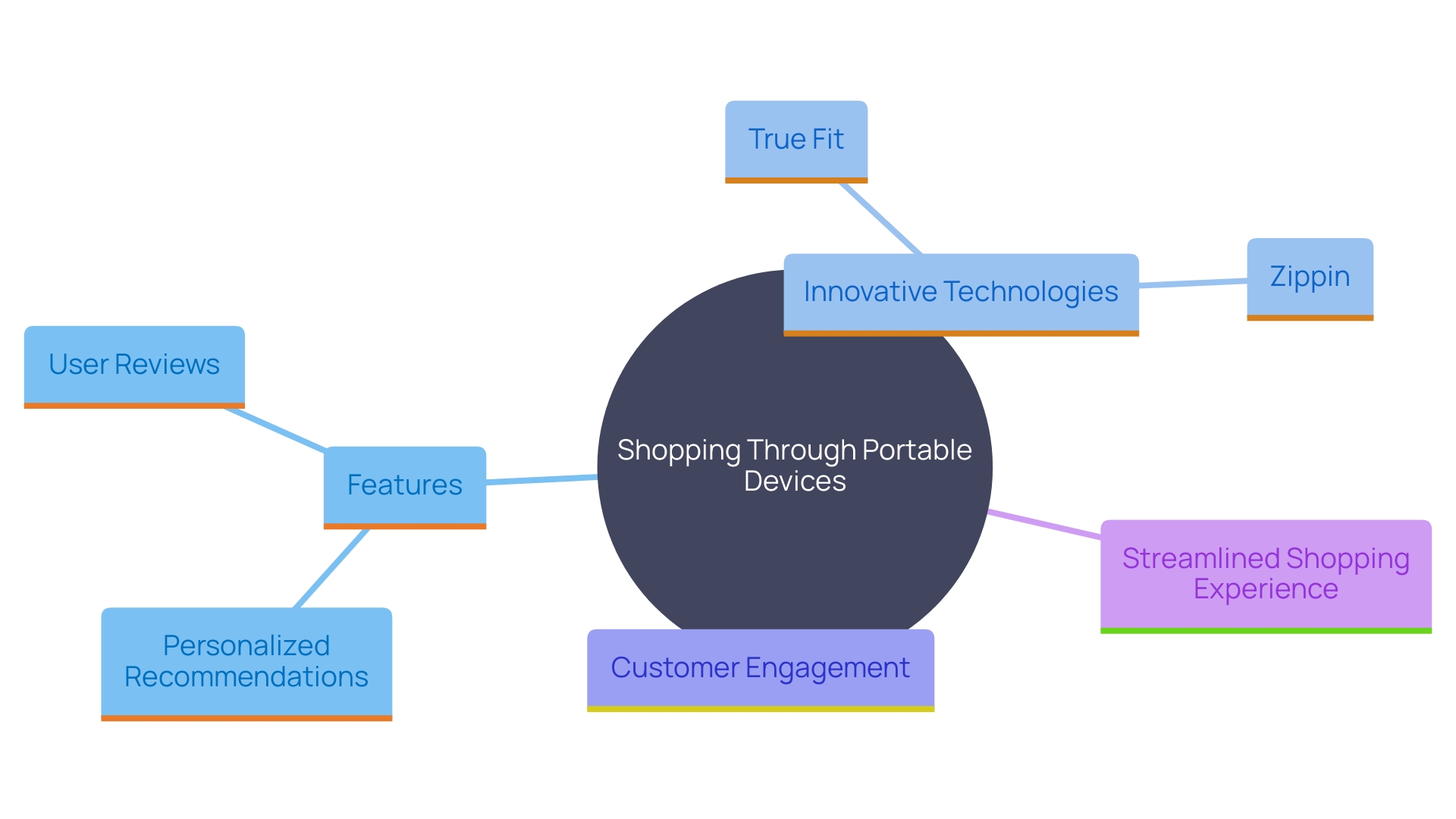
Mobile Payments
Wireless transactions transform exchanges by allowing individuals to settle for products and services directly through their handheld devices, removing the requirement for cash or tangible credit cards. This category encompasses advanced technologies like NFC (Near Field Communication), QR codes, and mobile wallets, providing unparalleled convenience and security. 'Mobile wallets, in particular, have become fundamental to modern transactions, allowing users to store account information for multiple banks securely.'. By 2026, it is estimated that 5.2 billion people will use digital wallets globally. These wallets not only streamline the transaction process but also encrypt and safeguard users' credit and debit card information, making exchanges safer. Furthermore, with the increase of cross-border transactions, the demand for secure, swift, and dependable mobile solutions continues to expand, fulfilling the high expectations of today's consumers for immediate financial convenience. Recent surveys reveal that over 90% of consumers have used some form of digital payment in the past year, highlighting the increasing trust and reliance on these technologies.
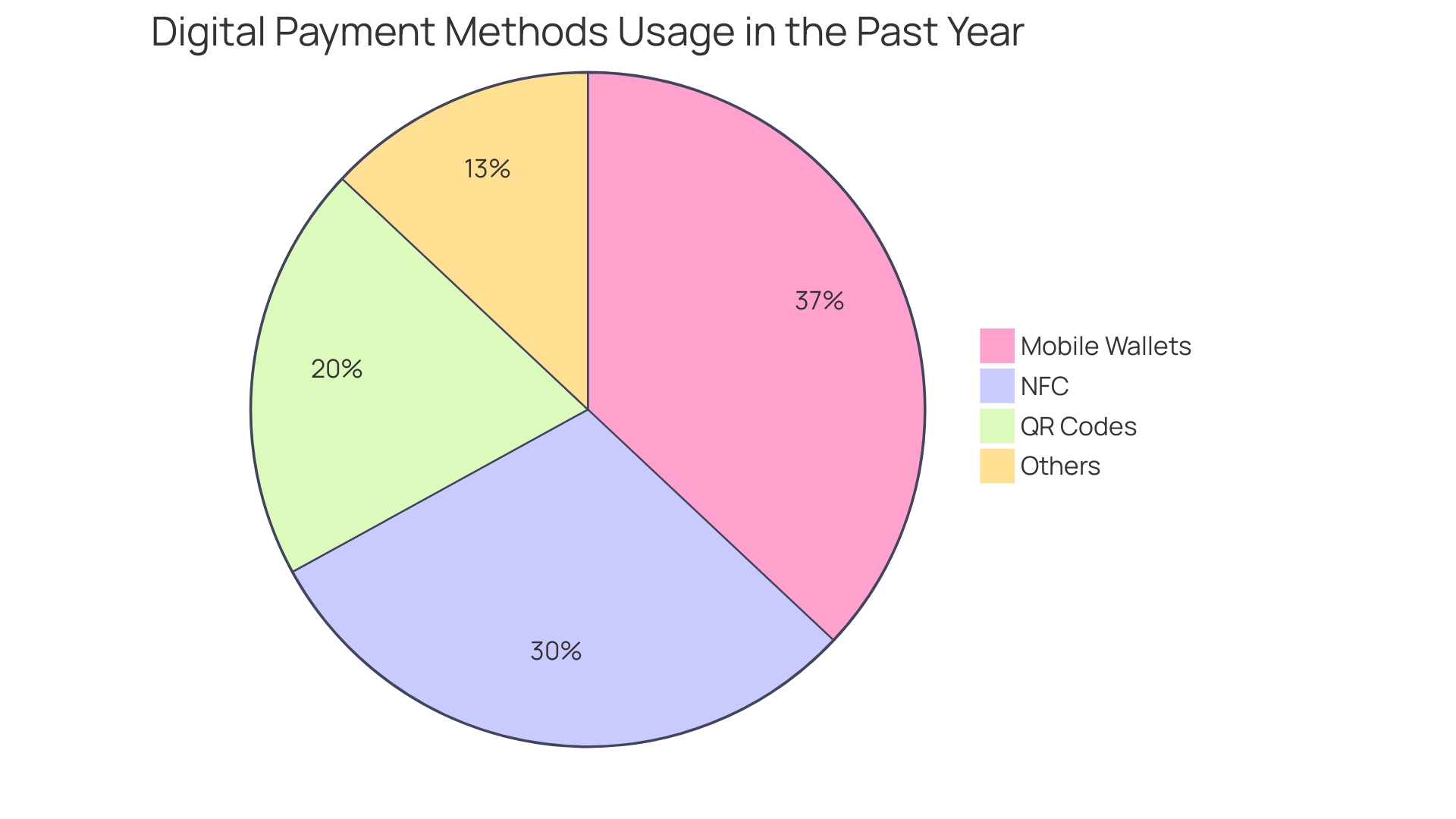
Mobile Banking
Mobile banking empowers users to conduct a range of banking transactions directly from their smartphones or tablets, including checking balances, transferring funds, paying bills, and managing accounts while on the move. This sector prioritizes both security and user-friendly interfaces to foster better customer engagement with financial services.
The significance of security in banking through devices cannot be overstated, as emphasized by recent incidents. For instance, the BBC reported a case where a malicious application, PDF AI: Add-On, exploited Android’s Accessibility features to access sensitive user data. Similarly, another incident involved a healthcare professional losing her life savings after a stranger used her unlocked phone. These examples highlight the necessity for stringent security measures in banking applications on portable devices.
Banks are also focusing on accessibility to ensure inclusivity. CaixaBank's recent initiatives, such as the 'Braille Pack,' demonstrate their commitment to providing accessible banking services to visually impaired individuals. This service allows the use of any card issued with Braille reading/writing code, ensuring that their financial services are inclusive and accessible to all.
The need for smooth, integrated interactions is clear, with customers anticipating their smartphone engagements to reflect the ease of in-store visits. Banking leaders are responding by enhancing digital interactions, as noted in the Digital Banking Maturity 2024 report. They are either offering a comprehensive range of key banking operations with a focus on intuitive design or developing 'super applications' that cater to a broad spectrum of needs on a single platform.
Statistics show that the mobile banking sector is growing rapidly, with over 6 million datapoints from 60 of the world's top economies. 'This extensive data aids in making informed decisions to enhance user satisfaction and maintain security.'. By leveraging these insights, banks can continue to evolve and meet the ever-changing demands of their customers.
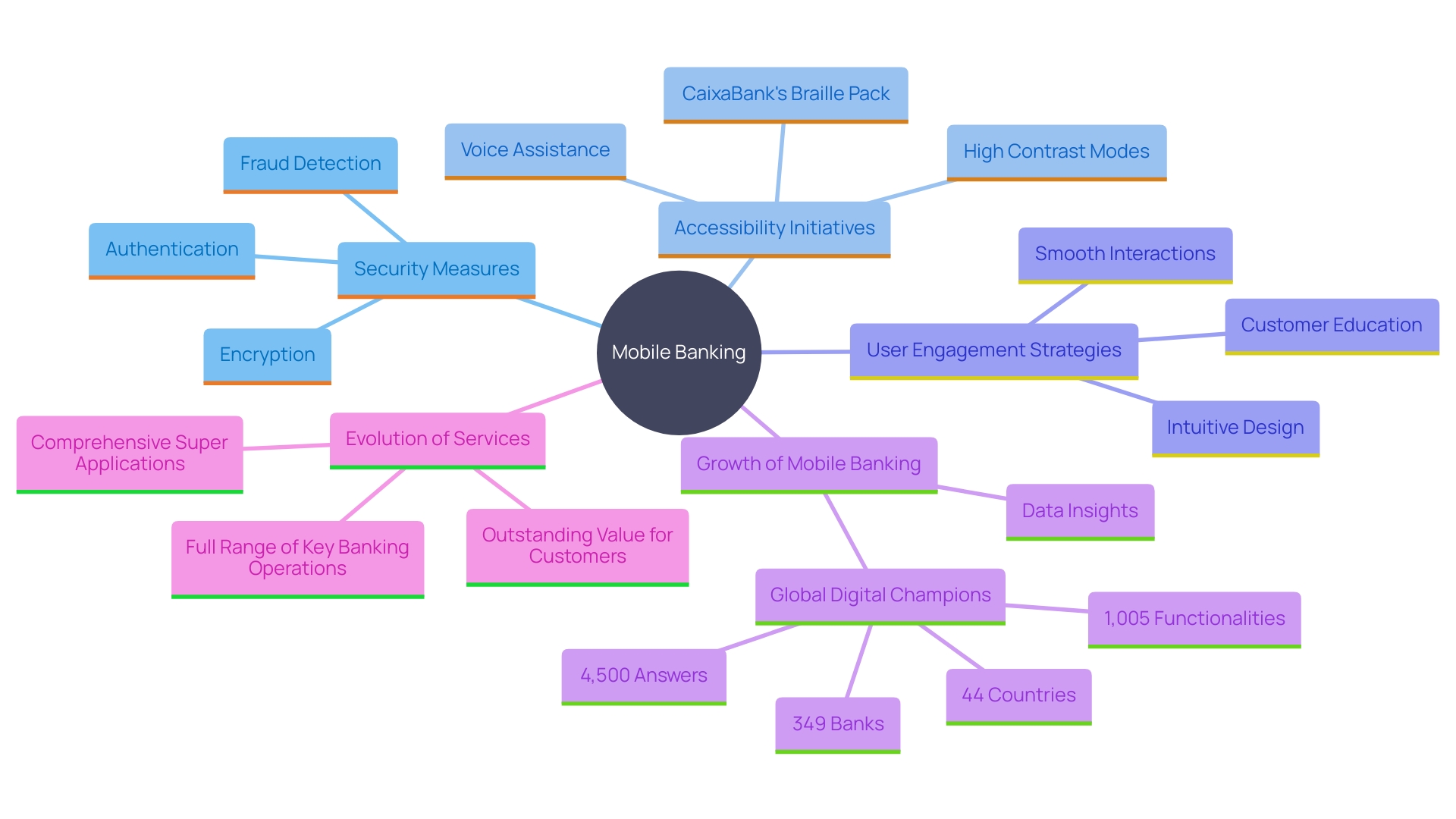
Additional Mobile Commerce Categories
Beyond the main forms of commerce on handheld devices, several extra classifications have surfaced that further enhance the shopping journey. 'Mobile ticketing has transformed the method by which consumers buy and handle tickets for events, travel, and entertainment, offering a seamless and paperless process.'. Digital wallets, including Google Wallet and Apple Pay, provide secure and convenient payment alternatives, fueling the expansion of payment methods and enhancing financial inclusion, particularly in developing economies.
Mobile marketing has become indispensable, leveraging personalized and location-based advertising to engage consumers effectively. This trend corresponds with the increasing desire for customized interactions, which has been a major emphasis in recent years. Furthermore, specialized services such as healthcare applications are improving patient care by offering convenient access to medical information, appointment scheduling, and telemedicine, making healthcare more obtainable and effective.
These advancements in commerce on handheld devices are not only enhancing user experience but also driving significant market growth. Companies like Paytm are investing in artificial intelligence to improve service delivery and risk management, underscoring the importance of innovation in this dynamic sector.
Mobile Ticketing
Mobile ticketing offers a seamless solution for purchasing and storing tickets for events, travel, and entertainment directly on mobile devices. This innovative technology minimizes the need for physical tickets, streamlining the entry process and significantly enhancing user convenience. For instance, Italy's Trenord transit agency has integrated a new software platform across 250 ticket vending machines, allowing users to make transactions via digital apps, contactless credit and debit cards, NFC-enabled devices, or cash. Customers can access multimedia content, such as informational videos and travel options, directly from these machines.
The shift towards contactless payments, driven by the demand for efficiency, faster transactions, and safety, has become pivotal. This is backed by a study showing that nearly all Americans (97%) possess a phone, with nine out of ten having a smartphone. This widespread adoption highlights the increasing reliance on handheld devices for everyday transactions, including ticketing.
Furthermore, a case study from Cineplex illustrates that the introduction of self-service kiosks not only improved service quality but also raised sales per patron by 10%. Likewise, ticketing systems for portable devices can collect valuable customer information, such as place of residence, to better understand travel patterns and enhance service offerings.
In summary, ticketing via smartphones signifies a notable improvement in digital transactions, providing a more secure, efficient, and user-friendly interaction. This technology is not only transforming the way tickets are purchased and used but is also providing valuable insights to service providers to enhance their offerings.
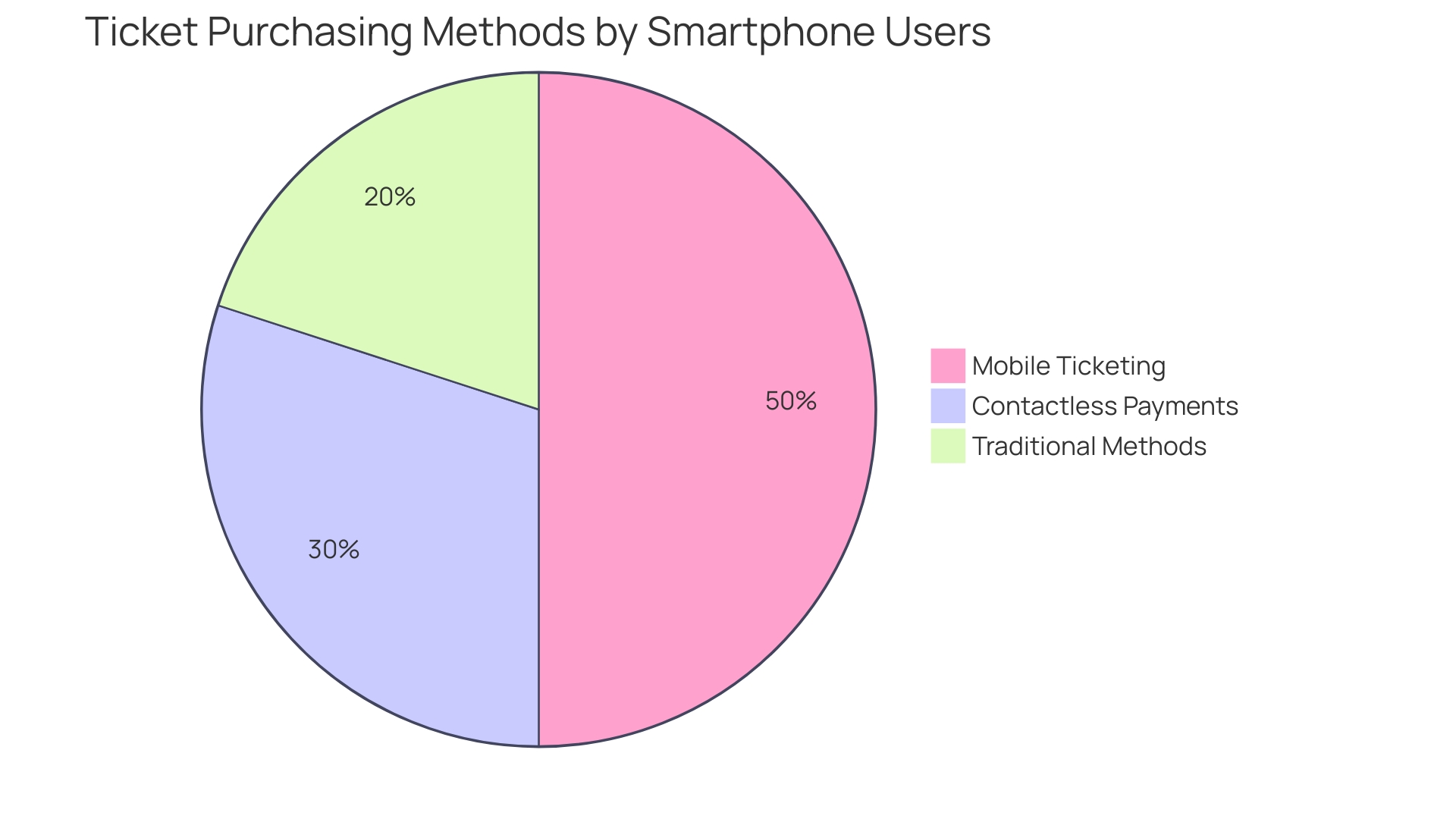
Digital Wallets
Digital wallets have transformed the manner in which consumers manage transactions by securely storing financial information on mobile devices. This technology not only facilitates swift transactions both online and in-store but also enhances the shopping experience through features like loyalty cards and promotional offers. By 2026, an estimated 5.2 billion people will use digital wallets, accounting for more than half of the global population. This surge is driven by the convenience, efficiency, and security these wallets offer, as they encrypt users' credit and debit card information, making them a safer alternative to conventional transaction methods.
Furthermore, digital wallets frequently exist as applications that permit users to connect various financial methods, such as debit and credit cards, facilitating smooth transactions with merchants that recognize these applications. This streamlined process eliminates the cumbersome checkout steps that can deter customers, thus providing significant benefits for merchants aiming to create a frictionless shopping experience. The increasing digitization of businesses and the rise of e-commerce have further fueled the demand for these secure and efficient payment systems, making digital wallets a critical component of modern financial transactions.
Mobile Marketing
Mobile marketing is increasingly vital in today's digital landscape, aiming to reach consumers through their mobile devices with tailored advertisements and promotions. This multifaceted approach includes SMS marketing, app-based marketing, and location-based services, all designed to enhance client engagement.
SMS Marketing: Once considered a niche channel, SMS marketing has rapidly gained traction. Nearly 40% of businesses now incorporate SMS into their marketing strategies, leveraging the high open rates and immediate reach of text messages. This method is catching up to more traditional channels like email, demonstrating its growing importance in the marketing mix.
App-Based Marketing: Mobile apps offer a direct line to consumers, providing businesses with opportunities to send personalized notifications, discounts, and updates. Apps can track user behavior, enabling highly targeted marketing efforts that can significantly boost customer retention and sales.
Location-Based Services: Utilizing GPS technology, location-based marketing allows businesses to send real-time, relevant ads to consumers based on their geographical location. This enhances the shopping experience by offering promotions and information precisely when and where they're most needed, driving immediate engagement and conversion.
The significance of portable gadgets in contemporary marketing cannot be overstated. As consumers increasingly prefer to access information, shop, and interact with brands through their devices, a robust marketing strategy focused on these platforms is essential for businesses aiming to stay ahead in a competitive market.
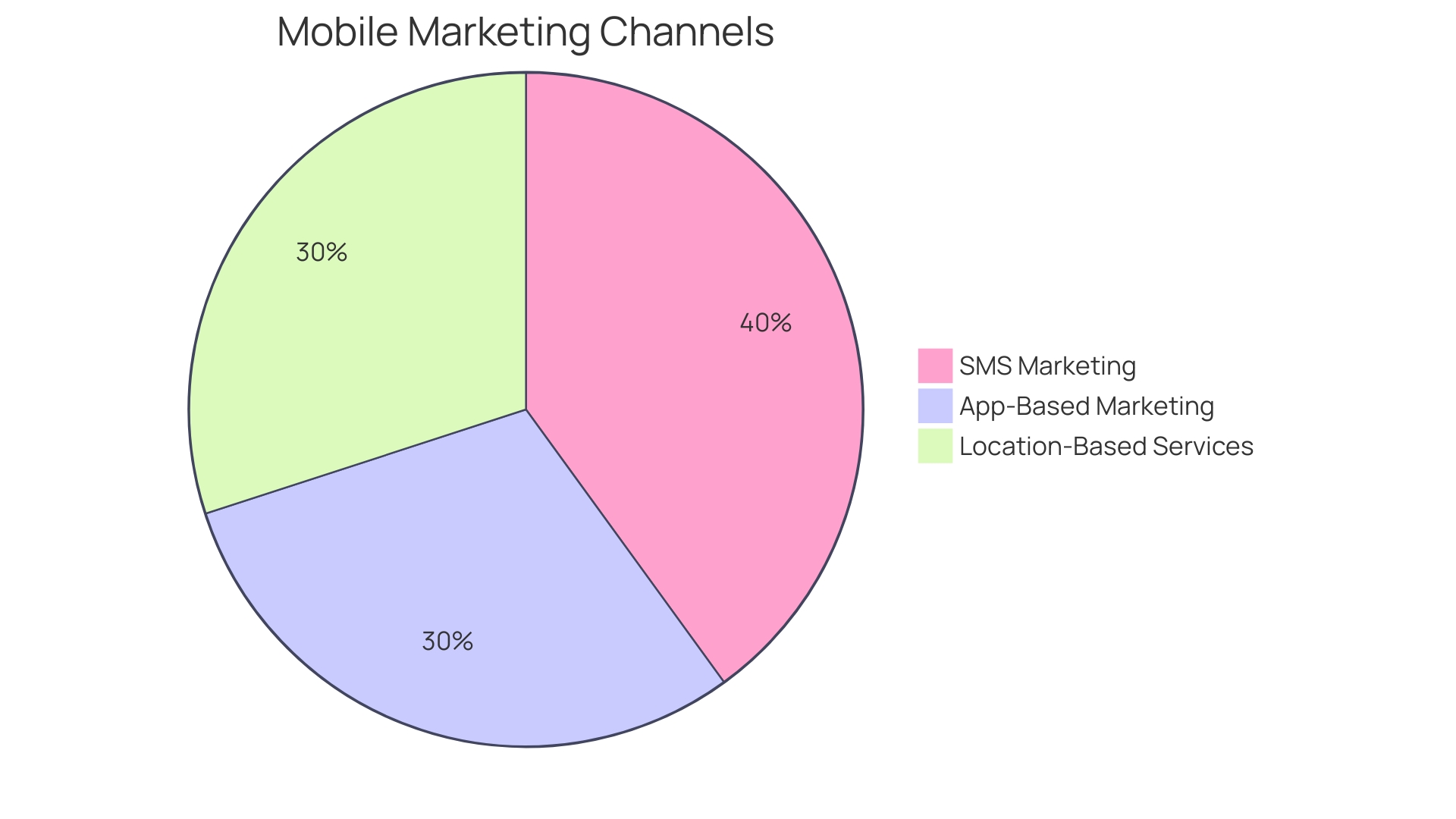
Mobile Retail and After-Sale Services
Mobile retail utilizes mobile platforms to increase sales and improve service for retailers. Mobile applications play a crucial role by offering personalized suggestions, loyalty programs, and essential after-sale services such as support and product returns.
Research by Outform indicates that 72% of fashion and sportswear shoppers prefer a blend of online and in-store shopping, demanding a seamless process across channels. This shift highlights the significance of applications in providing consistent customer service. 'Not only do 55% of shoppers appreciate the tactile experience of physical stores, but 69% also find inspiration in their in-store visits, making it vital for retailers to integrate digital solutions effectively.'.
Additionally, companies like Capillary have observed significant trends in digitized loyalty programs, especially among fuel retailers adapting to the rise of Electric Vehicles (EVs) and technological advancements. This shift emphasizes the wider trend of incorporating portable solutions to address changing consumer preferences and environmental issues.
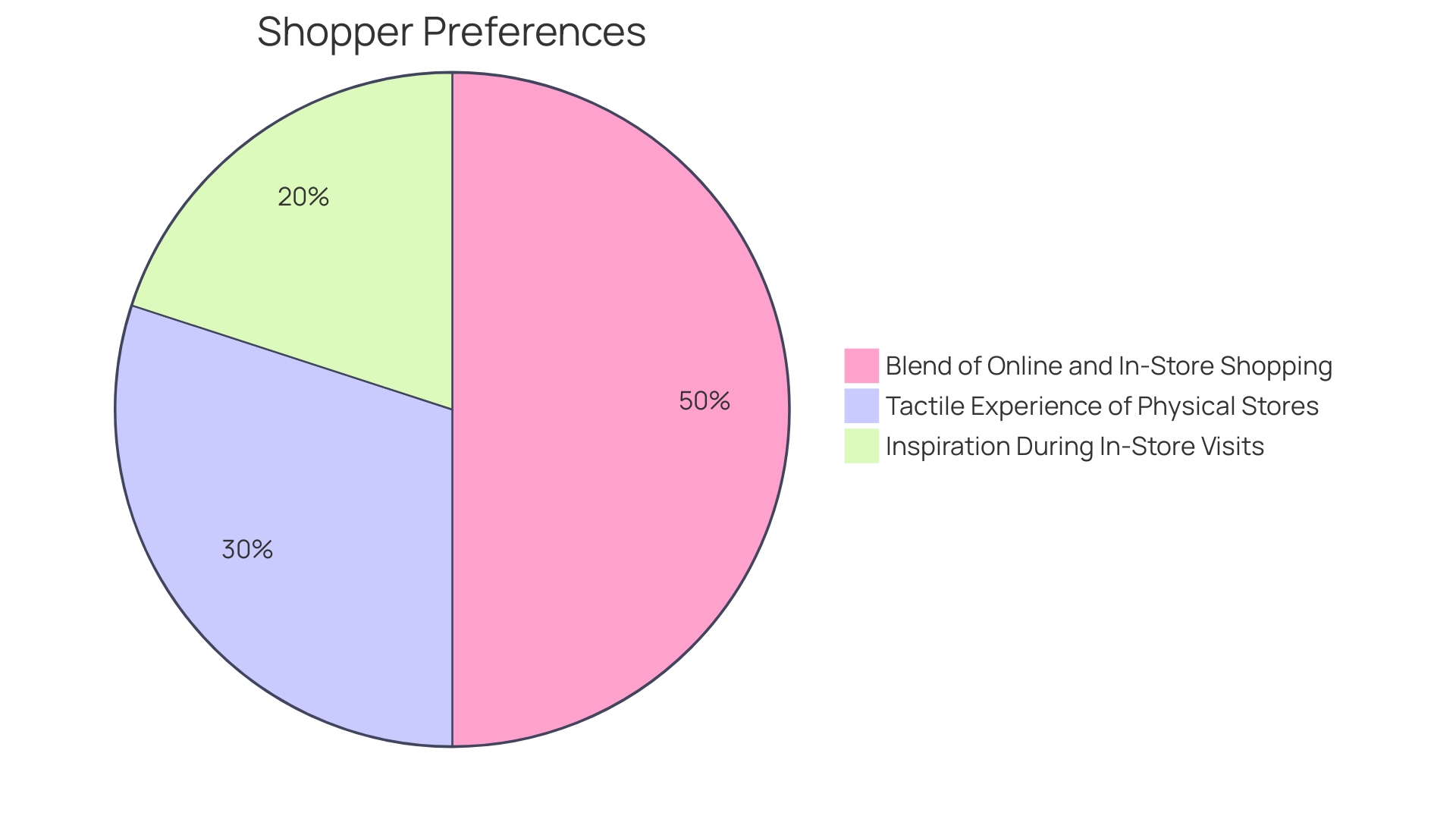
Mobile Commerce for Healthcare and Medicine
In the healthcare sector, wireless commerce has revolutionized patient care through telemedicine consultations, appointment scheduling, and the purchase of medical supplies. Remarkably, telehealth's roots trace back over a century, with the first health-related telephone call recorded in 1874. The COVID-19 pandemic significantly accelerated its adoption, pushing both medical professionals and patients to rely on virtual care to minimize infection risks and optimize healthcare resources. This surge in telehealth has continued post-pandemic, with facilities maintaining remote services to enhance accessibility and convenience for patients. However, this shift raises critical ethical, legal, and social issues, such as patient privacy, data control, and the impact on physician-patient relationships. Tackling these challenges is crucial to guarantee the responsible and effective use of commerce in healthcare.
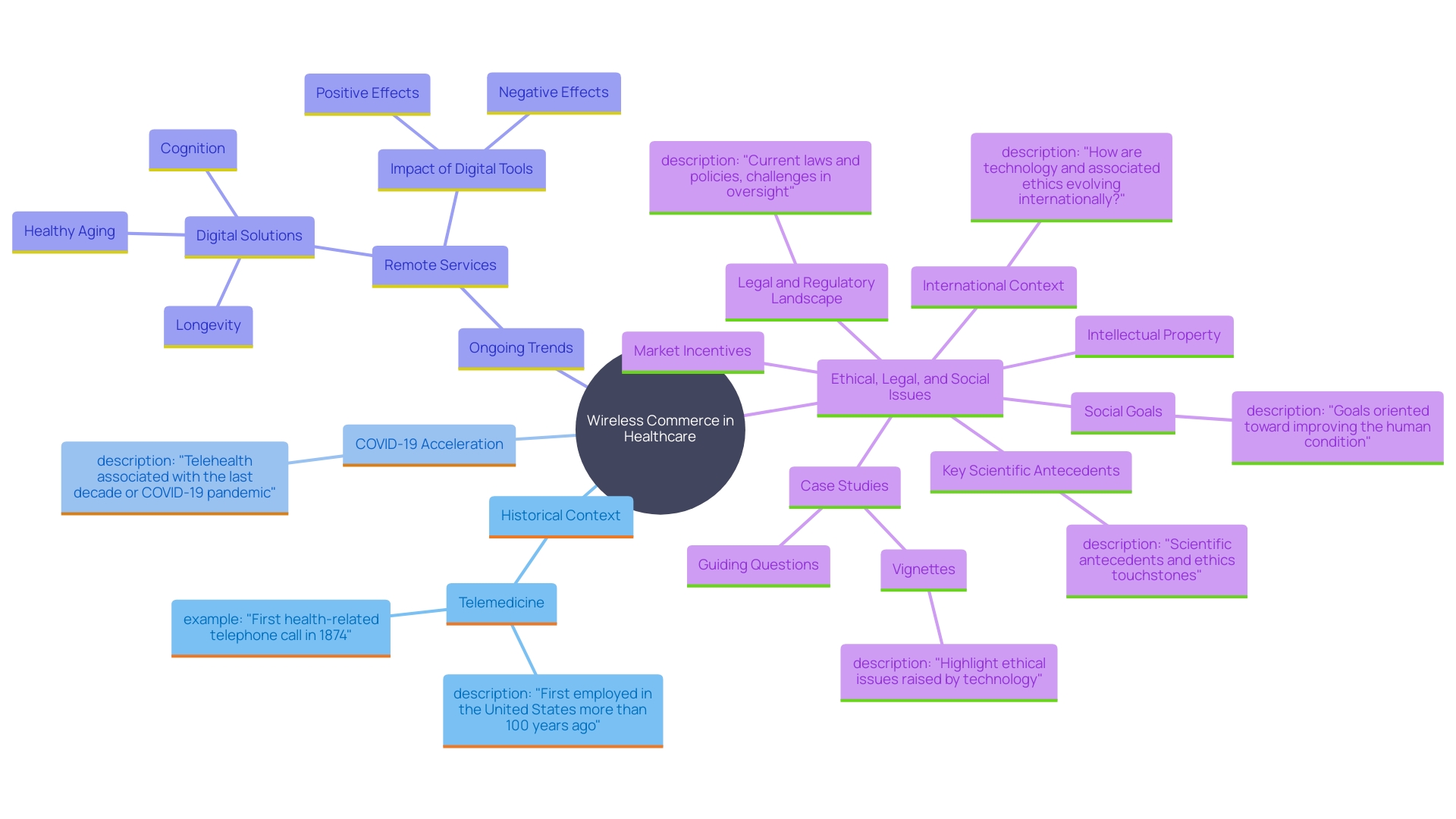
Benefits of Mobile Commerce
The growth of portable commerce has brought a plethora of advantages that are reshaping the retail landscape. Among the key benefits is the convenience of billing through portable devices, which has gained immense popularity. This trend is driven by the adoption of sound wave-based payments, the proliferation of smartphones, particularly Android devices, and the increasing usage in emerging economies. The ability to shop and pay without the need for cash or cards has made transactions smoother and quicker for consumers.
Moreover, smartphone commerce enables a cohesive shopping process. This means having real-time inventory visibility across all sales channels, enabling features like in-store pickup for online orders and easy returns regardless of the purchase point. Such capabilities are becoming essential for retailers aiming to provide a seamless omnichannel experience.
Furthermore, the COVID-19 crisis has increased the need for contactless transactions, further enhancing the market for portable financial solutions. The sector is expected to see significant growth, despite potential security concerns and data breaches. Key players such as Google, PayPal, and Visa continue to innovate and enhance the security and user-friendliness of their payment solutions.
'The incorporation of portable commerce into the broader e-commerce strategy is crucial.'. As noted by industry experts, achieving unified commerce involves overcoming challenges posed by legacy systems and requires collaboration among a diverse group of decision-makers. The confidence of senior executives in reaching their commerce goals is higher among those who report directly to the C-suite, highlighting the importance of strategic alignment and the right technological tools.
In summary, the advantages of commerce via portable devices extend beyond convenience and efficiency. They include fostering a cohesive shopping environment, enabling innovative payment solutions, and driving growth in a competitive market. As technology continues to evolve, mobile commerce will undoubtedly play a pivotal role in the future of retail.
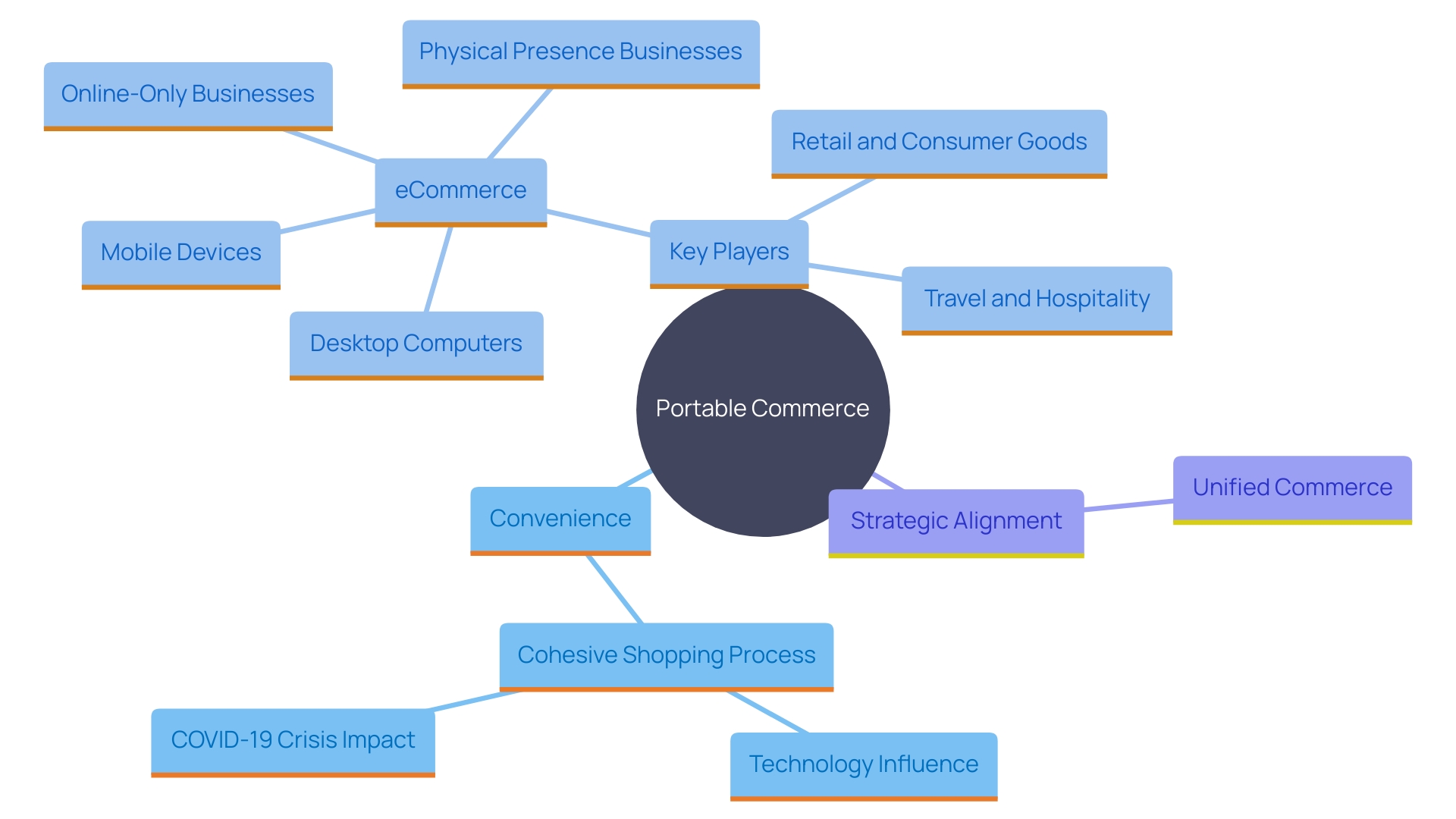
Enhanced Customer Experience
'Mobile commerce significantly improves the customer interaction by providing easy access to products and services, aligning perfectly with the modern consumer's expectations of convenience.'. 'As per recent studies by Retail Technology Review, 72% of fashion and sportswear consumers favor shopping both online and in physical stores, anticipating a uniform interaction across platforms.'. This seamless integration is crucial as more than half of shoppers (55%) appreciate the tactile sensation of touching and feeling products, while 35% go in-store to consider and compare options. Additionally, 69% of shoppers find inspiration from the in-store experience. By providing the flexibility to purchase from any location at any moment, digital commerce fulfills the need for accessibility and ease, ultimately enhancing satisfaction and loyalty among consumers.
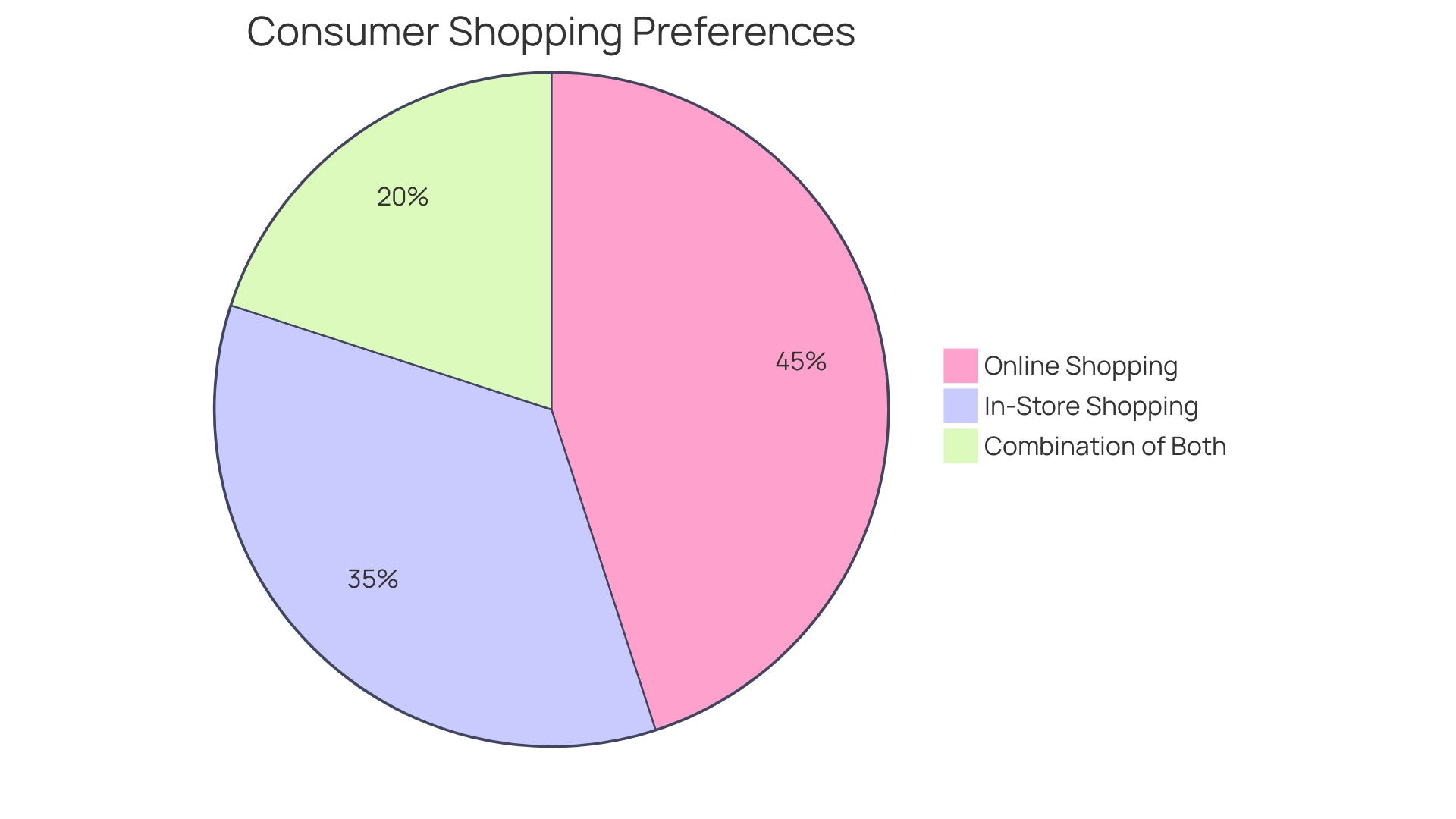
Streamlined Checkout Process
A streamlined checkout process is crucial for reducing cart abandonment rates and enhancing client satisfaction. With the average global cart abandonment rate at a staggering 71.7% overall, and even higher at 77.4% for mobile users, simplifying the checkout process is more urgent than ever. By integrating features such as saved account details and one-click purchases, transactions become faster and more convenient for the customer, addressing the impatience and short attention spans common among online shoppers. According to the Baymard Institute, the average large e-commerce site could boost conversions by 35% through a more efficient checkout process.
A significant illustration is HUGO BOSS’s collaboration with Visa and Adyen, which aided in creating a strong international transaction framework, guaranteeing a smooth shopping process globally. As Jan Philipp of HUGO BOSS observed, utilizing digitalization fully supports their Lead In Digital strategy, emphasizing the significance of an effective transaction infrastructure.
Innovations like checkout-free stores, exemplified by the new Dublin Town To Go store powered by Zippin technology, further illustrate the benefits of frictionless transactions. Customers just scan their payment card to enter, with cameras and weight-sensored shelving identifying purchases and charging cards automatically, leading to a swift, hassle-free shopping process. 'This technology fulfills the requirements of both departing and arriving travelers as well as those awaiting in the arrivals zone, highlighting the future of effortless shopping interactions.'.
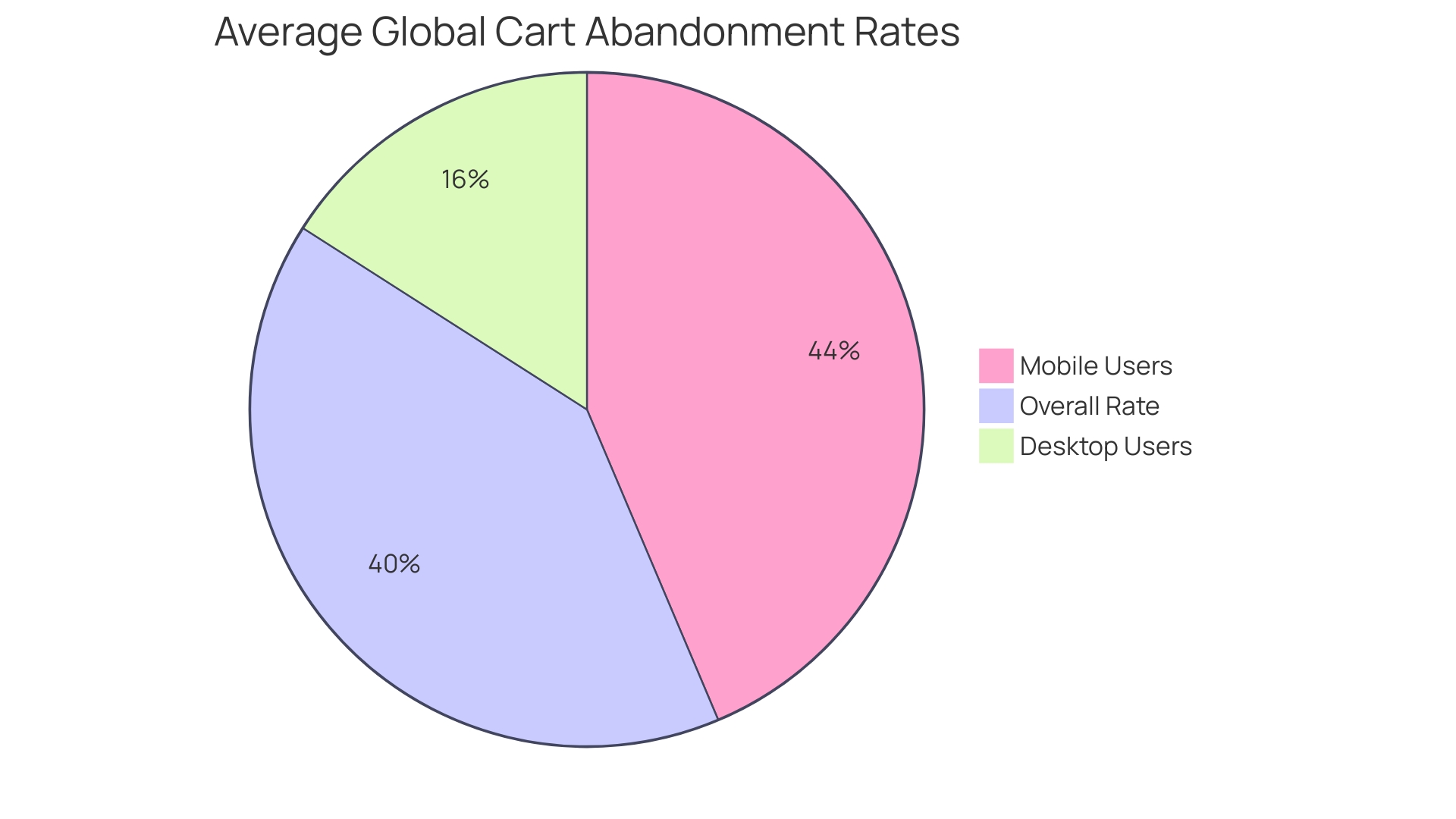
Improved Accessibility
Mobile commerce significantly enhances accessibility for consumers, allowing them to shop whenever and wherever they prefer. This flexibility seamlessly caters to busy lifestyles, increasing overall engagement. Considering that 97% of Americans possess a cellular device, the ease of m-commerce is unquestionable. Consumers spend an average of 4 hours and 30 minutes per day on their smartphones, checking them 144 times daily. This constant connectivity ensures that shopping can fit effortlessly into their daily routines.
Additionally, 72% of fashion and sportswear buyers now favor shopping both online and in-store, anticipating a uniform interaction across channels. This combination of digital and physical shopping methods is motivated by the wish to touch, try on, and compare products directly while enjoying the convenience of mobile shopping. For instance, 55% of shoppers value the tactile sensation, while 35% go in-store to compare options, highlighting the importance of a cohesive omni-channel strategy.
Case studies like that of Bemol, a Brazilian retail chain, demonstrate how robust e-commerce platforms can bridge the gap between remote locations and the global market. Bemol offers complimentary public WI-Fi in secluded regions, ensuring that even the most distant customers can access online shopping, thereby improving their overall shopping satisfaction.
In addition, innovative retail solutions, such as the checkout-free store at Dublin Airport using Zippin technology, showcase the future of seamless shopping experiences. This store allows travelers to grab items without queuing, offering a glimpse into how mobile commerce can enhance convenience and efficiency in various scenarios.
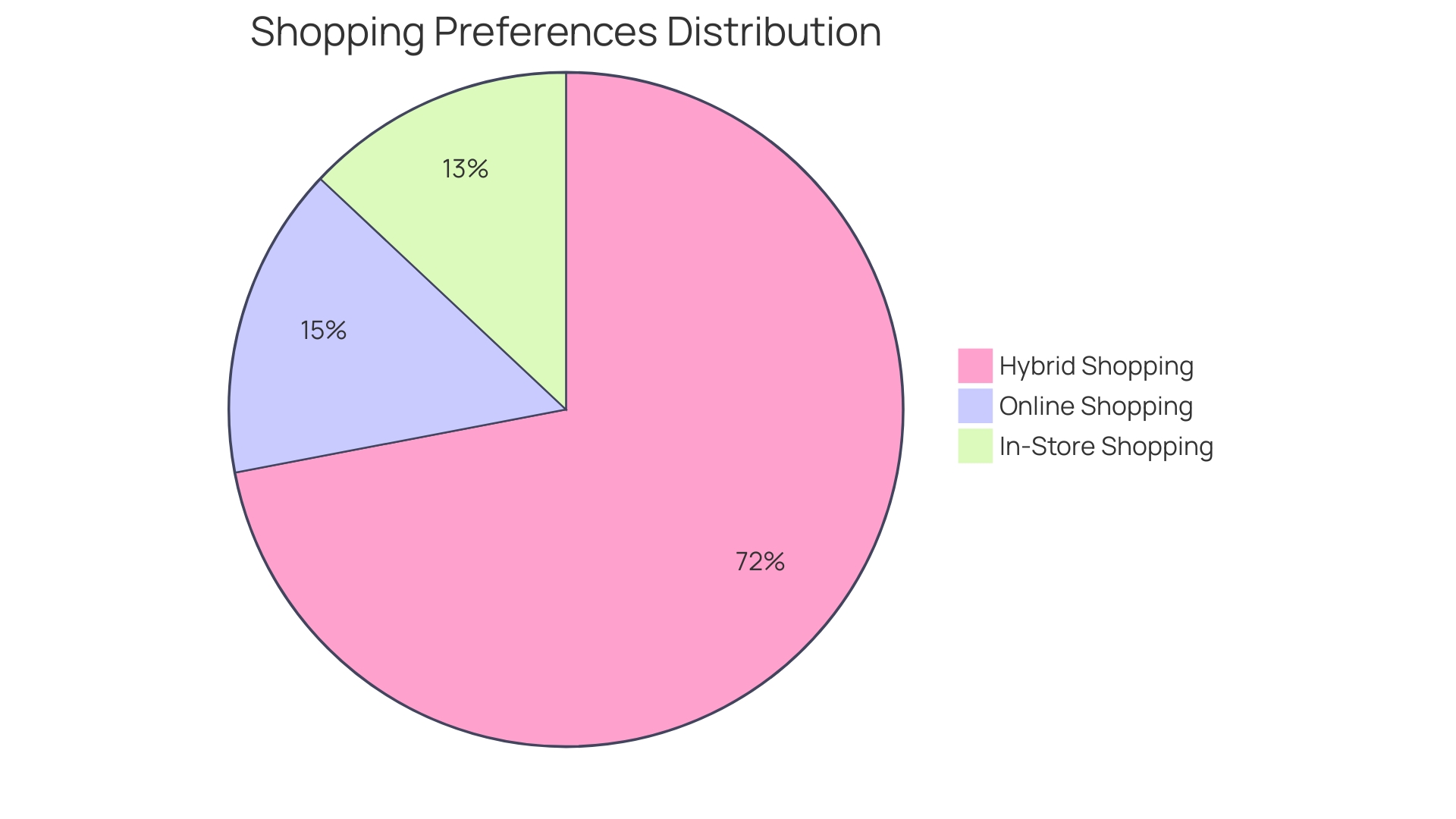
Personalized Marketing
Mobile commerce enables businesses to leverage data analytics for precise and personalized marketing efforts, significantly enhancing client engagement and loyalty. By tapping into sophisticated data platforms, companies can now create comprehensive consumer profiles and deliver tailored product recommendations that align with individual preferences. This targeted approach not only boosts conversion rates but also fosters long-term client relationships. According to Gartner® Research, brands that effectively use personalization technologies observe significant enhancements in user experience and engagement, ultimately boosting revenue growth. Furthermore, AI-based solutions like Analytical Alley's provide actionable insights into marketing performance, allowing businesses to make smarter decisions and optimize their marketing spend. As Todd Parsons from Criteo highlights, integrating various data sources to map the customer journey from discovery to purchase is a game-changer, offering unprecedented opportunities for businesses to maximize the value of their advertising and foster deeper connections with their customers.
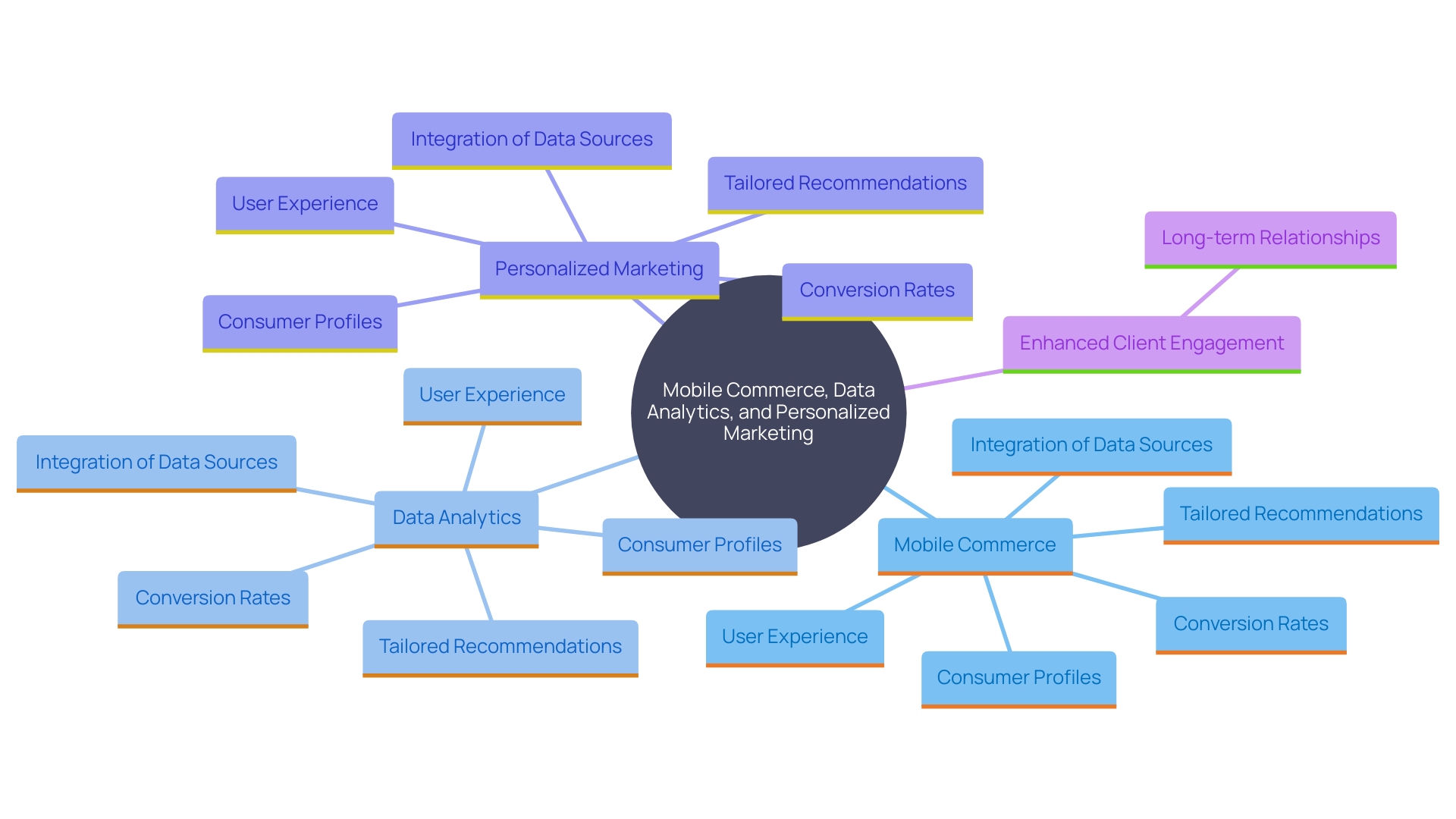
Growth Opportunities
'The quick adoption of portable devices presents significant growth opportunities for businesses.'. By adopting portable commerce, companies can tap into new revenue streams and enhance their market presence. The mobile transaction sector is anticipated to experience significant expansion, fueled by advancements like sound wave-based transactions and the rising adoption of smartphones, particularly Android devices. Moreover, the global shift toward contactless transactions, accelerated by COVID-19, is propelling this growth further.
Additionally, the m-commerce market is segmented by payment types like NFC, QR-based, online digital, and text-based methods, and spans diverse regions including North America, Europe, Asia Pacific, Latin America, and the Middle East & Africa. The introduction of innovative technologies, such as the checkout-free stores powered by Zippin technology in Dublin Airport, exemplifies the evolving landscape of retail and e-commerce.
However, security concerns and the rising number of high-profile data breaches pose challenges to the industry. Despite these issues, companies like Benefit Cosmetics are leveraging versatile digital channels to enhance customer engagement by allowing appointment modifications via WhatsApp. This adaptability highlights the importance of seamless, user-friendly experiences in today's digital economy.
Additionally, industry benchmarks and studies suggest that the desktop era of e-commerce is diminishing, with handheld spending anticipated to exceed desktop expenditures shortly. 'Adobe Analytics reports consistent double-digit growth in spending on handheld devices, forecasting that transactions from these platforms will dominate during the holiday season and beyond.'. This trend emphasizes the essential need for companies to prioritize commerce strategies to remain competitive in the swiftly changing market.
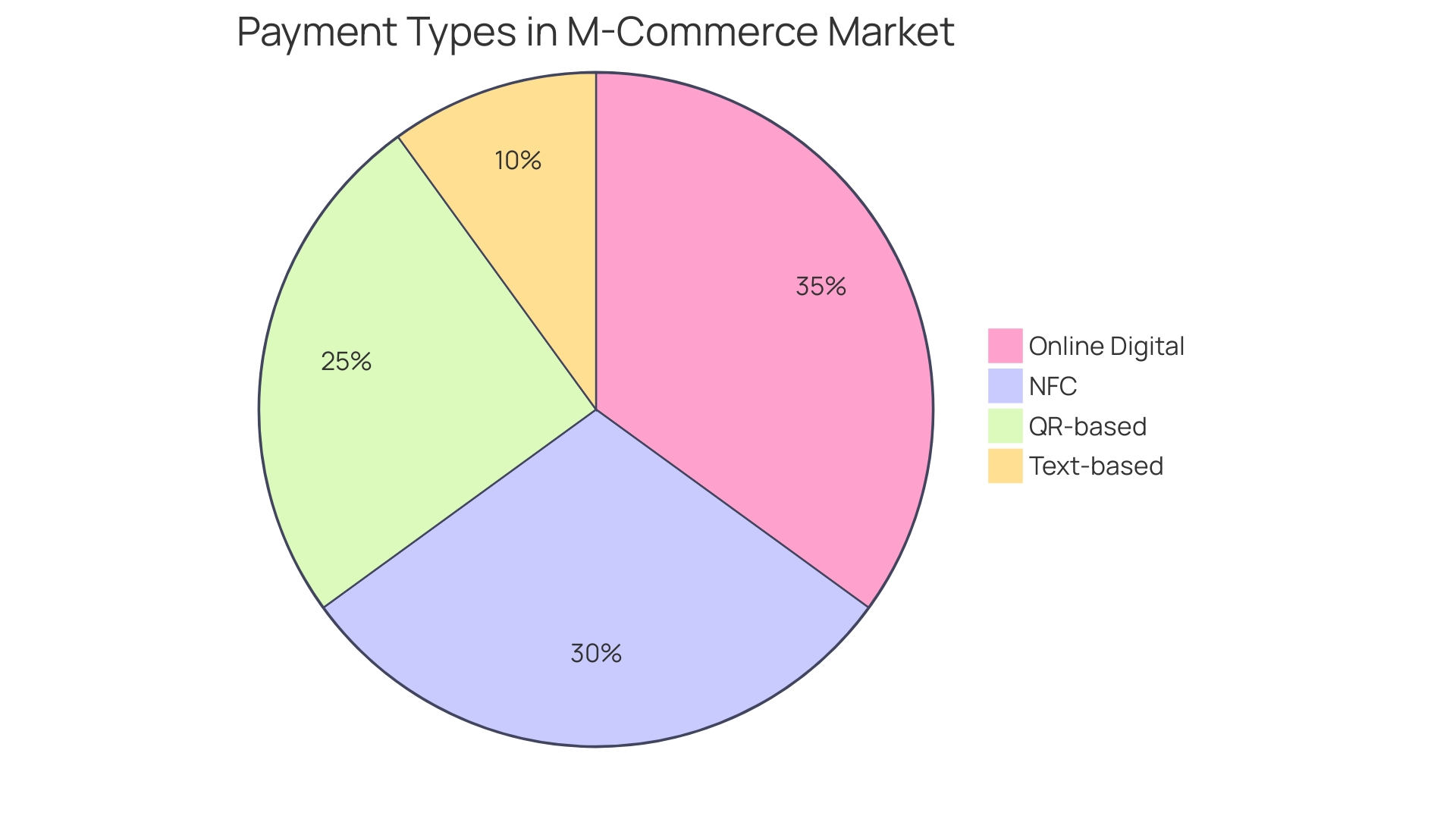
Trends in Mobile Commerce
Staying informed about current trends in commerce on devices is essential for businesses striving to maintain a competitive edge. These trends are a mirror to evolving consumer preferences and technological advancements. For instance, social commerce is on the rise, driven by consumers' increasing engagement on various social platforms. Additionally, the growing concern around sustainability, product origin, and ethical business practices is shaping purchasing decisions.
A recent study by InMobi highlighted that 60% of shoppers in Southeast Asia are spending more on online shopping this year, reflecting a significant shift towards a mobile-first approach. This trend is supported by the fact that a majority of consumers already know what items to put in their cart but are still deciding on the brands, with popular categories including fashion, gadgets, and personal care products.
"Generative AI is another transformative force in commerce, enhancing customer service by improving brands' knowledge and memory of their customers.". This technology is being embraced by major brands like Colgate-Palmolive to create and optimize product descriptions, ensuring accuracy and personalization.
Furthermore, the scenery of commerce via devices is also being influenced by the ongoing evolution of data privacy regulations. As consumers continue to seek tailored interactions, businesses must navigate the fine line between leveraging data and respecting privacy boundaries. The year 2023 has seen remarkable advancements in this area, with brands adapting to new privacy norms while striving to deliver meaningful interactions.
Ultimately, staying abreast of these trends not only helps businesses adapt but also positions them to anticipate future shifts in consumer behavior, ensuring sustained growth and relevance in the ever-evolving digital marketplace.
Augmented Reality (AR) in Mobile Commerce
The integration of augmented reality (AR) into mobile commerce is revolutionizing how consumers shop by enabling them to visualize products in their own environments before making a purchase. This technology significantly enhances the shopping journey by bridging the gap between digital and physical retail spaces, making it more interactive and personalized. For example, customers can virtually try on clothes or see how furniture fits in their homes, which aids in decision-making and reduces the likelihood of returns.
'Based on research conducted by retail innovation agency Outform, 72% of fashion and sportswear consumers favor a smooth interaction across both online and physical channels.'. The tactile sensation remains essential, with 55% of shoppers appreciating the ability to touch and feel products, while 35% visit physical stores to evaluate and compare choices. AR technology meets these needs by allowing shoppers to have a similar tactile and comparative experience digitally.
Moreover, AR is not just enhancing the consumer journey but also promoting sustainability and profitability. As research highlights, AR's rise intersects with sustainability, creating a win-win scenario for people, profit, and the planet. This convergence is crucial in today's market, where technology and sustainability are becoming increasingly intertwined.
In essence, augmented reality is establishing a new benchmark in commerce by offering a more connected and enriched consumer journey. This innovative approach is expected to reshape the retail landscape, making shopping more engaging, efficient, and sustainable.
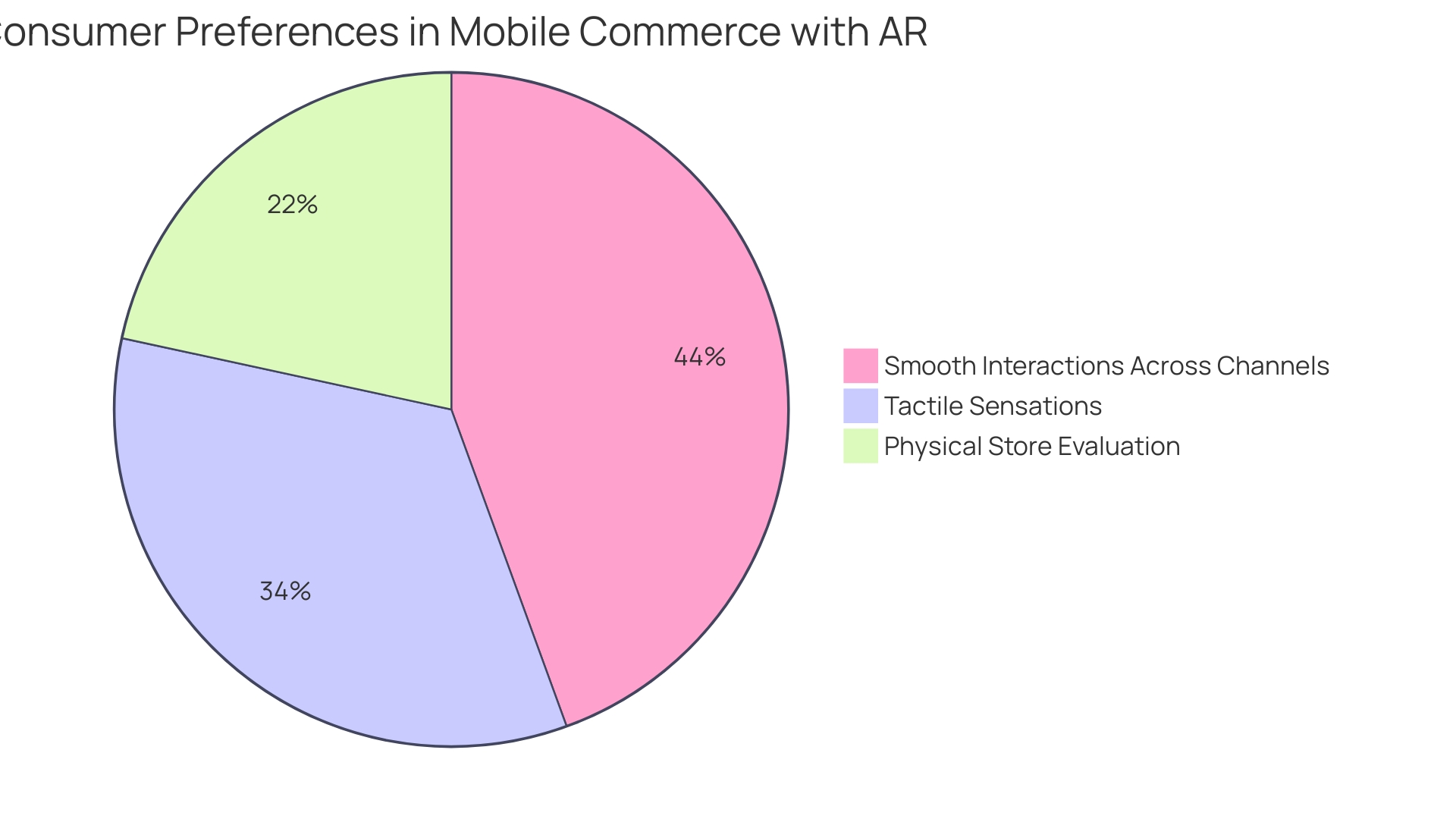
Multiple Mobile Payment Options
The swift growth of portable transaction alternatives, including cryptocurrencies and digital wallets, is transforming the environment of consumer exchanges by providing unmatched adaptability and safety. A recent survey highlights that over 90% of U.S. consumers have utilized some form of digital transaction in the past year, a metric that has surged especially during the pandemic. This change is not confined to the U.S.; in Switzerland, the app Twint has become the second most integrated method among online vendors, reflecting its increasing importance with over 5 million users and 386 million transactions in 2022 alone.
The attraction of digital transactions rests in their ease and swiftness, removing the requirement for tangible cards or currency, which advantages both consumers and sellers. 'The worldwide transaction market via smartphones, assessed at $53.5 billion in 2022, is expected to surge to more than $607.9 billion by 2030, propelled by the growing digitization of enterprises and the expansion of online commerce.'. Furthermore, the demand for cross-border transactions is projected to surpass $100 trillion worldwide in the coming decade, emphasizing the necessity for secure, efficient financial systems.
As the adoption of these technologies accelerates, digital wallets are expected to see transactions grow from $802 billion in 2023 to $929.8 billion in 2024. This growth emphasizes the significance of fulfilling consumer expectations for quick, secure, and dependable payment alternatives, further solidifying the role of digital payments in the future of commerce.
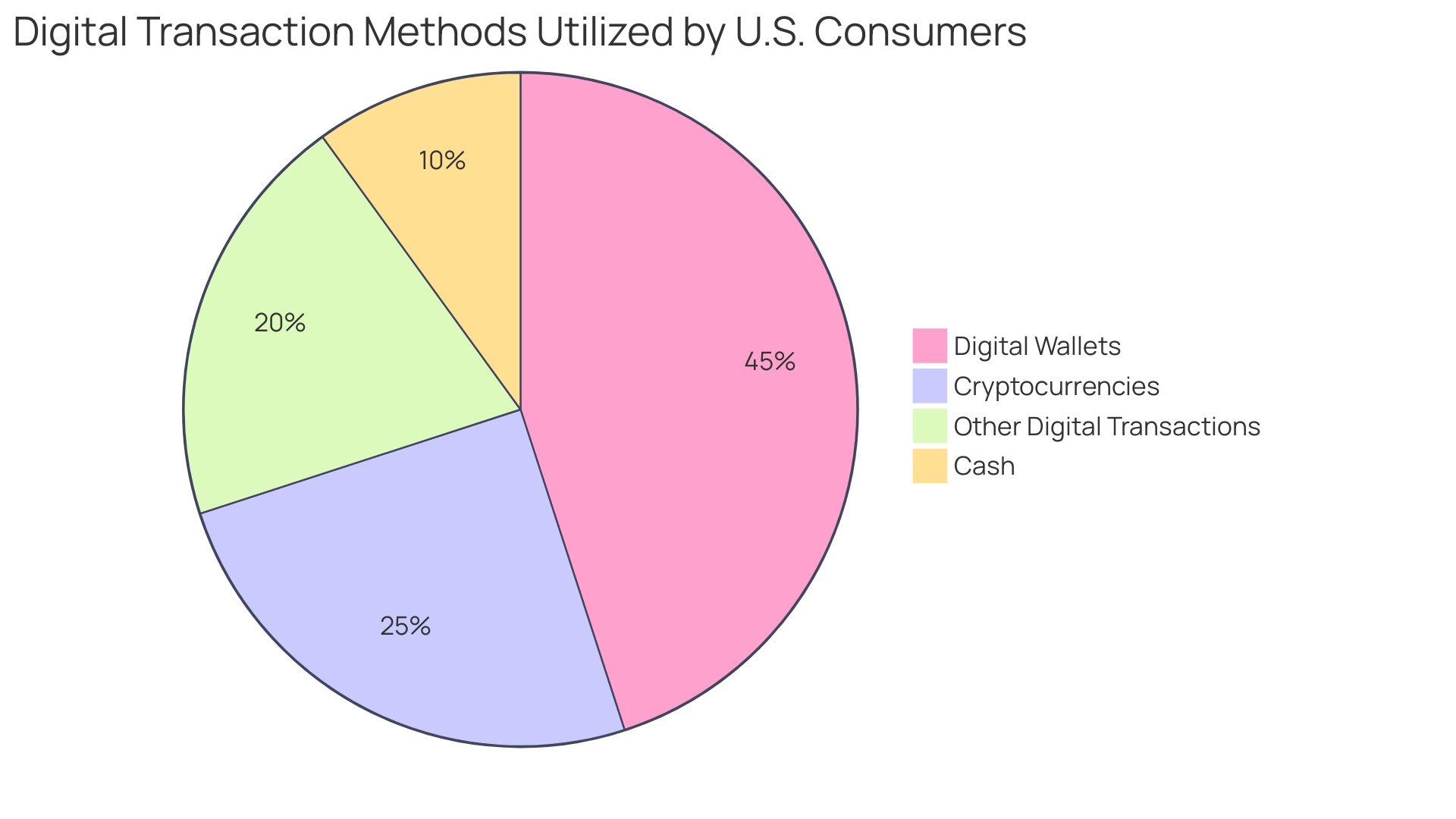
Use of Chatbots
Chatbots in mobile commerce transform support by providing instant and efficient assistance, significantly enhancing user engagement and satisfaction. These AI-driven tools can handle a myriad of tasks, from answering queries and providing personalized product recommendations to facilitating seamless transactions. For instance, beauty industry leaders like Benefit Cosmetics have integrated chatbots to allow clients to easily view, modify, or cancel appointments within messaging platforms like WhatsApp. This innovation has streamlined their scheduling process, freeing up employees from phone duties during peak times and enhancing overall service. 'The integration of chatbots is not just limited to client assistance; they are also deployed for lead qualification.'. According to a study of 30 EdTech websites, 37% of chatbots provide user support, while others collect contact information and answer FAQs, particularly on main and pricing pages. With the increasing adoption of AI technologies, 86% of e-commerce decision-makers plan to boost their AI investments, recognizing the substantial revenue growth—11% or more—that chatbots and other AI tools can deliver. This trend highlights the essential role chatbots play in modernizing interactions and enhancing business efficiency.
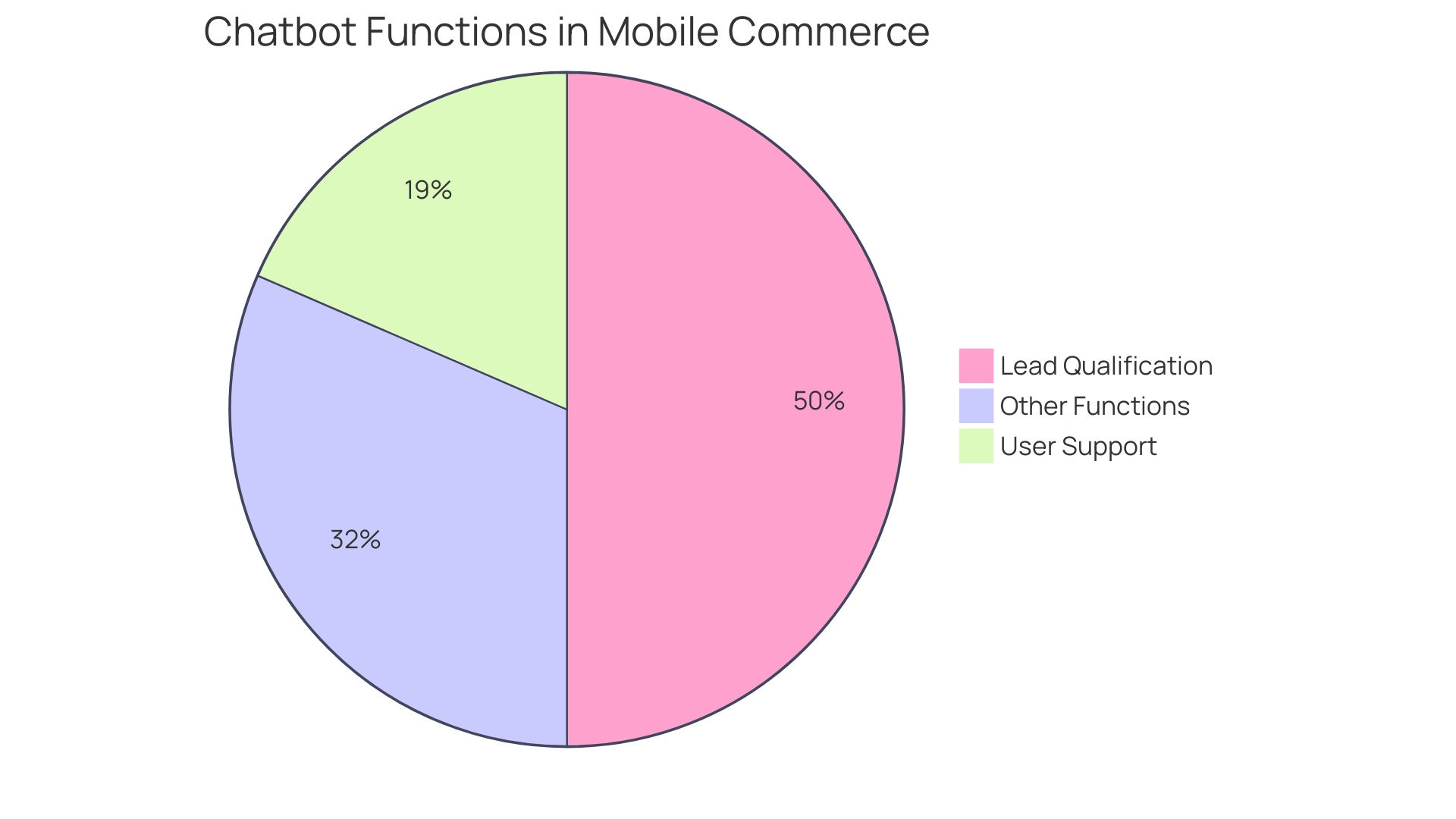
Omnichannel Experiences
Developing smooth interactions across various channels guarantees uniform communication and service on all platforms, boosting client loyalty and brand image. According to a report from dunnhumby, 70% of retailers have successfully maintained or increased their loyal clientele, with 53% seeing a rise in loyalty scheme participation. This demonstrates the effectiveness of a coherent consumer ecosystem where online and offline interactions are integrated seamlessly. As MediaMarkt, Europe's largest electronics retailer, emphasizes, connecting online research with in-store purchases is crucial for meeting evolving consumer behaviors. By understanding customer preferences and creating unified commerce strategies, businesses can build trust and deliver personalized experiences that resonate with their audience.
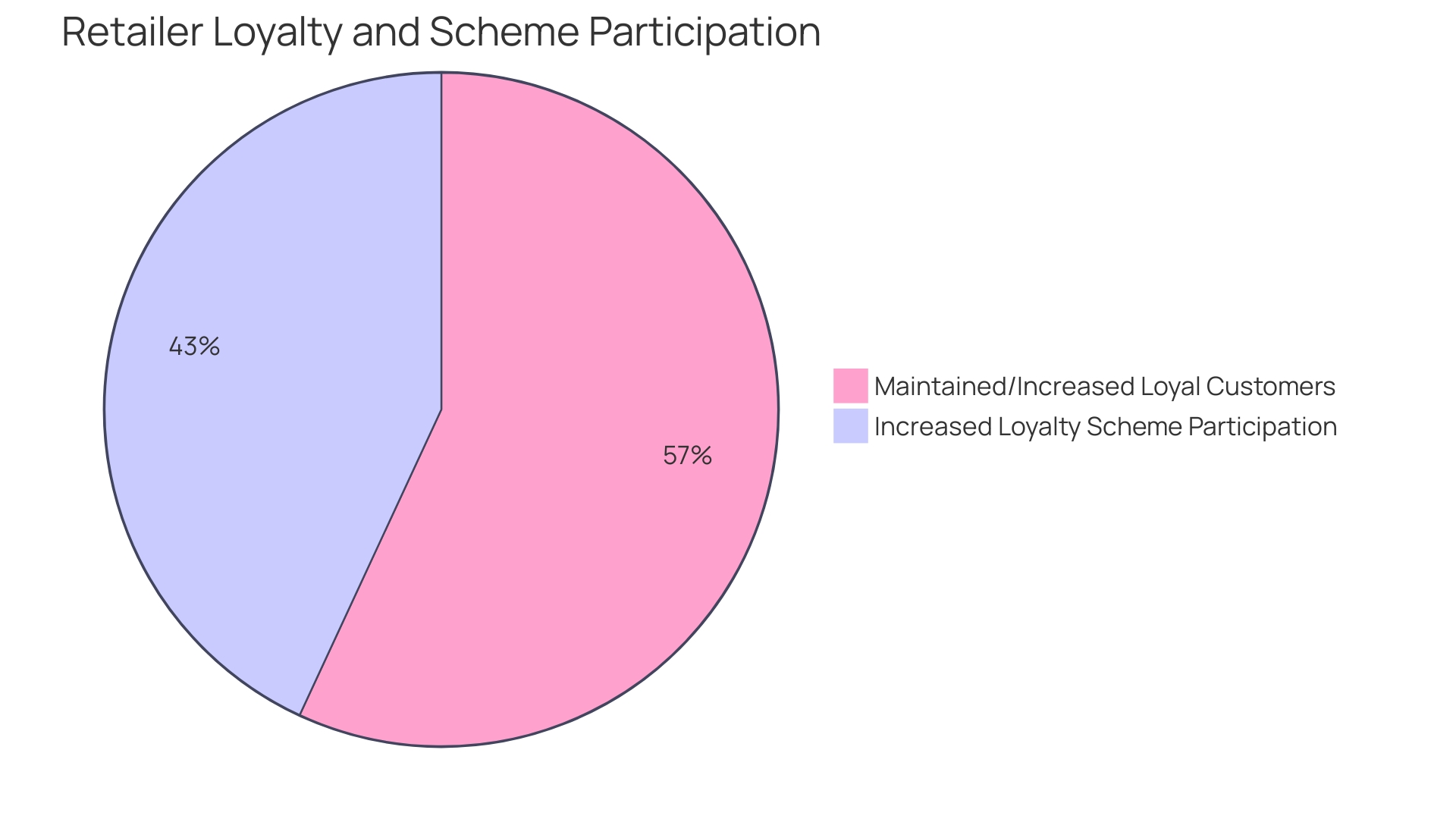
Conclusion
The evolution of mobile commerce has brought a transformative shift in the retail landscape, fundamentally reshaping how consumers engage with brands. As outlined, mobile commerce, or m-commerce, encompasses various facets such as mobile shopping, payments, banking, and marketing, all contributing to a more integrated and convenient shopping experience. The increasing preference for hybrid shopping models highlights the necessity for retailers to create seamless connections between online and in-store experiences, thereby enhancing customer satisfaction and loyalty.
Innovative technologies, including augmented reality and chatbots, are further enhancing the consumer journey, allowing for personalized interactions and efficient service. The rise of digital wallets and mobile payments underscores the demand for secure, fast, and reliable transaction methods, reflecting changing consumer expectations in a digital-first world. Additionally, the integration of omnichannel experiences ensures a cohesive brand presence across multiple platforms, driving customer engagement and fostering loyalty.
In conclusion, businesses must prioritize the optimization of their mobile strategies to remain competitive in this rapidly evolving market. By embracing the latest technological advancements and understanding the diverse needs of consumers, retailers can not only meet current demands but also position themselves for future growth in the dynamic realm of mobile commerce. The journey towards a more connected, efficient, and customer-centric retail experience is ongoing, and staying ahead of these trends will be crucial for sustained success.





